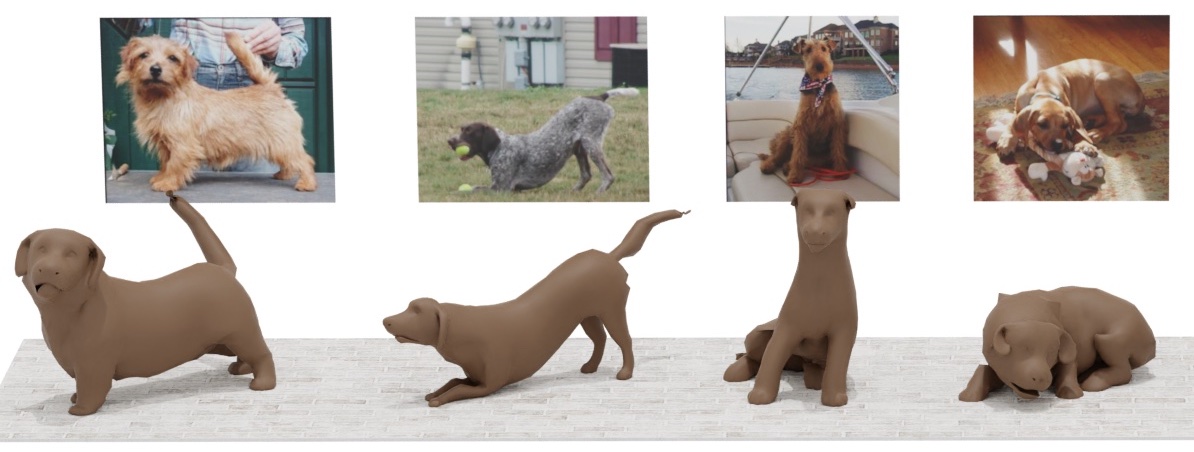Human Pose, Shape and Action
3D Pose from Images
2D Pose from Images
Beyond Motion Capture
Action and Behavior
Body Perception
Body Applications
Pose and Motion Priors
Clothing Models (2011-2015)
Reflectance Filtering
Learning on Manifolds
Markerless Animal Motion Capture
Multi-Camera Capture
2D Pose from Optical Flow
Body Perception
Neural Prosthetics and Decoding
Part-based Body Models
Intrinsic Depth
Lie Bodies
Layers, Time and Segmentation
Understanding Action Recognition (JHMDB)
Intrinsic Video
Intrinsic Images
Action Recognition with Tracking
Neural Control of Grasping
Flowing Puppets
Faces
Deformable Structures
Model-based Anthropometry
Modeling 3D Human Breathing
Optical flow in the LGN
FlowCap
Smooth Loops from Unconstrained Video
PCA Flow
Efficient and Scalable Inference
Motion Blur in Layers
Facade Segmentation
Smooth Metric Learning
Robust PCA
3D Recognition
Object Detection
BITE – Dog Shape and Pose from an Image

We address the problem of inferring the 3D shape and pose of dogs from images. Given the lack of 3D training data, this problem is challenging, and the best methods lag behind those designed to estimate human shape and pose. To make progress, we attack the problem from multiple sides at once. First, we need a good 3D shape prior, like those available for humans. To that end, we learn a dog-specific 3D parametric model, called D-SMAL. Second, existing methods focus on dogs in standing poses because when they sit or lie down, their legs are self occluded and their bodies deform. Without access to a good pose prior or 3D data, we need an alternative approach. To that end, we exploit contact with the ground as a form of side information. We consider an existing large dataset of dog images and label any 3D contact of the dog with the ground. We exploit body-ground contact in estimating dog pose and find that it significantly improves results. Third, we develop a novel neural network architecture to infer and exploit this contact information. Fourth, to make progress, we have to be able to measure it. Current evaluation metrics are based on 2D features like keypoints and silhouettes, which do not directly correlate with 3D errors. To address this, we create a synthetic dataset containing rendered images of scanned 3D dogs. With these advances, our method recovers significantly better dog shape and pose than the state of the art, and we evaluate this improvement in 3D.
Members
Publications



